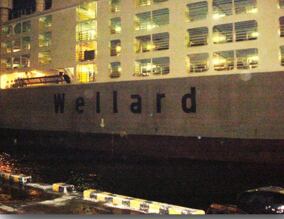The National Livestock Development Board (NLDB), a Sri Lankan Ministry of Livestock and Rural Community Development agency, drafted in Wellard Rural Exports to help increase the country’s milk supply and reduce its reliance on imported milk powder.
At the time, Sri Lanka was around 15% self-sufficient, and relied on milk powder imports worth around US$300m (€222m) each year.
To reduce this deficit, Sri Lanka set itself a goal of producing 600m additional liters of milk per year - a seemingly impossible task for a country with such a small dairy industry.
Aiming to boost the size of Sri Lanka’s dairy herd and increase the average daily yield from around three liters of milk per cow to the Australian average of 26 liters, Wellard supplied dairy cattle and equipment and advised on infrastructure and management.
Speaking with DairyReporter.com, Johann Wasserman, international project manager, Wellard Rural Exports, claimed that on the back of NLDB's dairy development project Sri Lanka will in time overtake India, recently named the world's largest milk producer, in terms of milk quality and average yield per cow.
“I think that Sri Lanka is far ahead of India,” said Wasserman. “I think they will become the leader in this region.”
“Sri Lanka will set the pace. It actually already has a better system in place. I think Sri Lanka’s quality and average production will be higher than in India.”
Private sector interest

Phase one, a five-year, US$13m (€9.6m) project saw Wellard supply 2,000 Jerseys, Friesians, and Jersey Friesians to three farms in the central “temperate” Bopaththalawa region of Sri Lanka in March 2012.
The second, two-year, US$21m (€15.5m) project will see Wellard supply an additional 2,500 dairy cattle and infrastructure to a new indoor “controlled environment” dairy farm in “drier” south Sri Lanka.
Having witnessed the early success of the NLDB dairy development project, the private sector has even come calling, said Wasserman.
“Now they see how successful the first phase was they want to get involved," he said.
“There are a few private sector projects in the pipeline. We’ve had interest from local and foreign dairies.”
“The Ministry of Economic Development is also looking into a 20,000 cow project as well,” said Wasserman.
“Always…room for importation”
Despite the initial success of the NLDB project and the additional government and private sector interest, Sri Lanka will “realistically” never be self-sufficient, said Wasserman.
“There will always be room for importation,” he said.
“When they Talk about self-sufficiency, it won’t be 100%,” he said. “It will likely be between 60% and 70%.”
“That is a massive goal,” said Wasserman. “I hope they achieve it, but there are still a lot of skills that need to be developed.”
